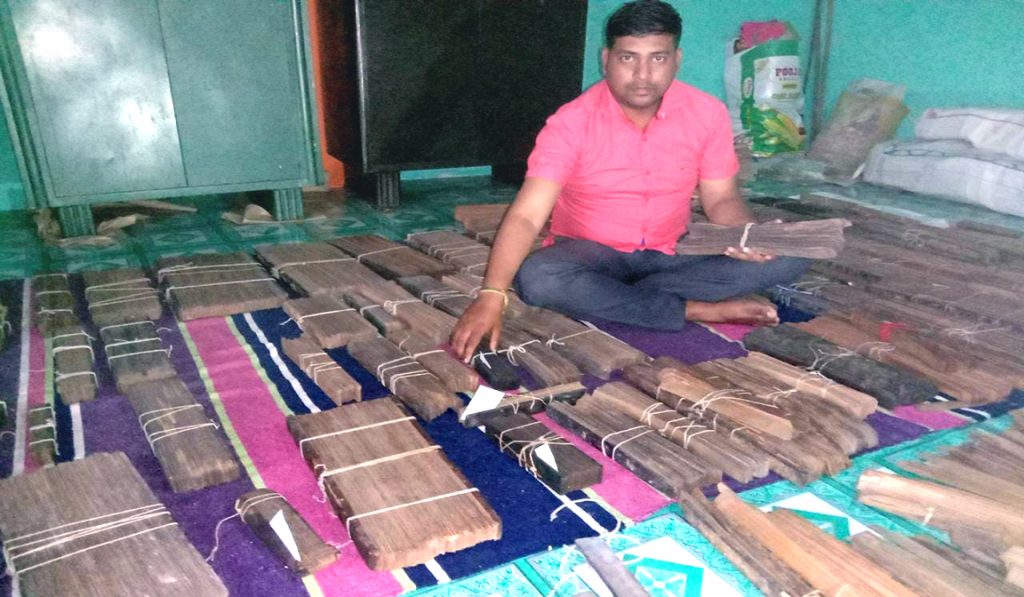Nayagarh: His passion for collection of ancient palm leaf manuscripts has helped him build a library and a museum in Nayagarh district.
A banker by profession, Sanjay Kumar Sahu is a native of Durdura village under Nuagaon block in the district.
His passion to protect culture and ancient glory preserved on palm leaf manuscripts has helped him find a place in the OMG Book of Records. His efforts have put the spotlight on his non-descript village.
Before the arrival of print, many households and temples in the state and outside possessed palm leaf manuscripts containing mythology and religious works.
As printed books crowded bookshelves, people started discarding these manuscripts as it was difficult to conserve them.
However, collectors like Sanjay recovered the discarded ones before they are trashed and built a library and museum out of it.
His passion for collecting ancient manuscripts started from his childhood from the house of Dambarudhar Sahu of Dimashar village in 2010. His first manuscript was Srimad Bhagavad Gita.
Later, he went on a collection spree and was able to collect 180 manuscripts by 2011. Soon people started noticing his works and various dailies carried reports on him.
Since then, there was no looking back for him as he built the Sri Jagannath Museum and Library. He has collected over 2000 ancient palm leaf manuscripts.
Among his collection, there are 410 sets of Ramayan, 280 Srimad Bhagavata Katha, five Telugu manuscripts, 350 Srimad Bhagavad Gita, five ancient texts of Vaidya Shastra, two poetry collections of Kabi Purusottam Das, two sets of Dwitiya Osha, five Khudurkuni Osha.
His collection also includes the printed version of Odia Mahabharat published in 1929 which was then available at a price of Rs 1.
He has been able to build a permanent building and library where his manuscripts, stamps of various countries, match boxes of various sizes and shapes, honey combs, weaver bird nests, currencies of various countries, tribal artefacts and indigenous paddy and other crop seeds are conserved.
His library also houses handwritten letters written by Pandit Jawaharlal Nehru, the first Prime Minister of India.
Showing his prized collection, he said ancient manuscripts are the legacy of our past when writers used to write mythology, epics and religious texts on them when printing technology was not invented.
Even people used palm leafs to write invitation cards during marriage while traditional astrologers called ‘Nahak’ wrote the horoscope of the newborns on these leafs.
However, the use of palm leafs started declining after the advent of printing, he said. He said he joined the banking profession to keep his library and museum running without any hitch.
PNN
